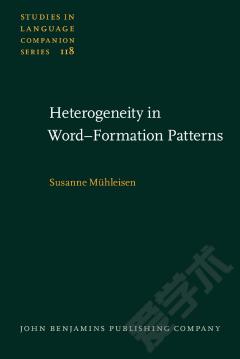Heterogeneity in Word-Formation Patterns. A corpus-based analysis of suffixation with -ee and its productivity in English.
Postulated word-formation rules often exclude formations that can nevertheless be found in actual usage. This book presents an in-depth investigation of a highly heterogeneous word-formation pattern in English: the formation of nouns by suffixation with -ee. Rather than relying on a single semantic or syntactic framework for analysis, the study combines diachronic, cognitive and language-contact perspectives in order to explain the diversity in the formation and establishment of -ee words. It also seeks to challenge previous measurements of productivity and proposes a new way to investigate the relationship between actual and possible words. By making use of the largest and most up-to-date electronic corpus – the World Wide Web – as a data source, this research adds substantially to the number of attested -ee words. It furthermore analyses this word-formation pattern in different varieties of English (British vs. American English; Australian English). Due to the multiplicity of approaches and analyses it offers, the study is suitable for courses in English word-formation, lexicology, corpus linguistics and historical linguistics.
{{comment.content}}








 京公网安备 11010802027623号
京公网安备 11010802027623号